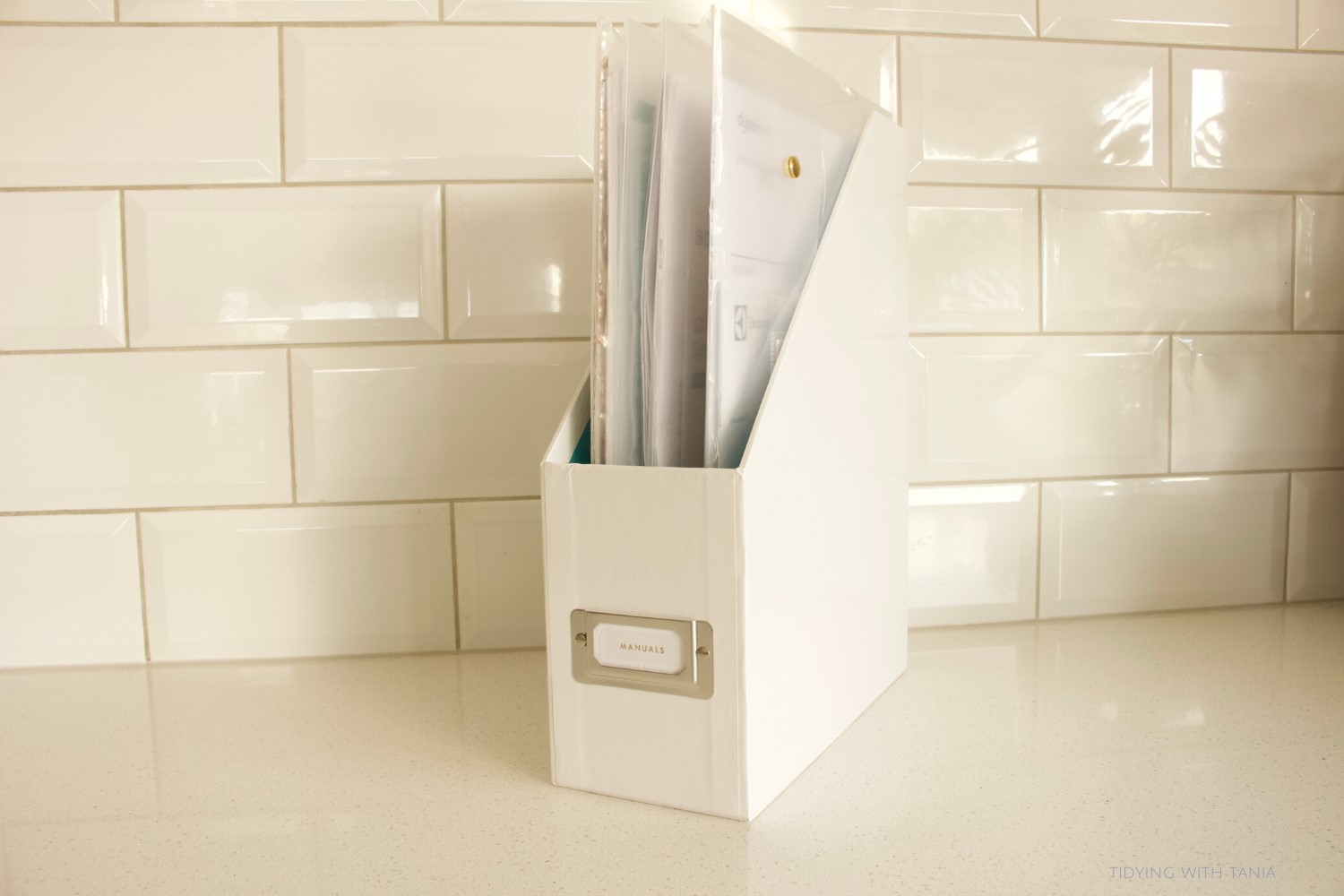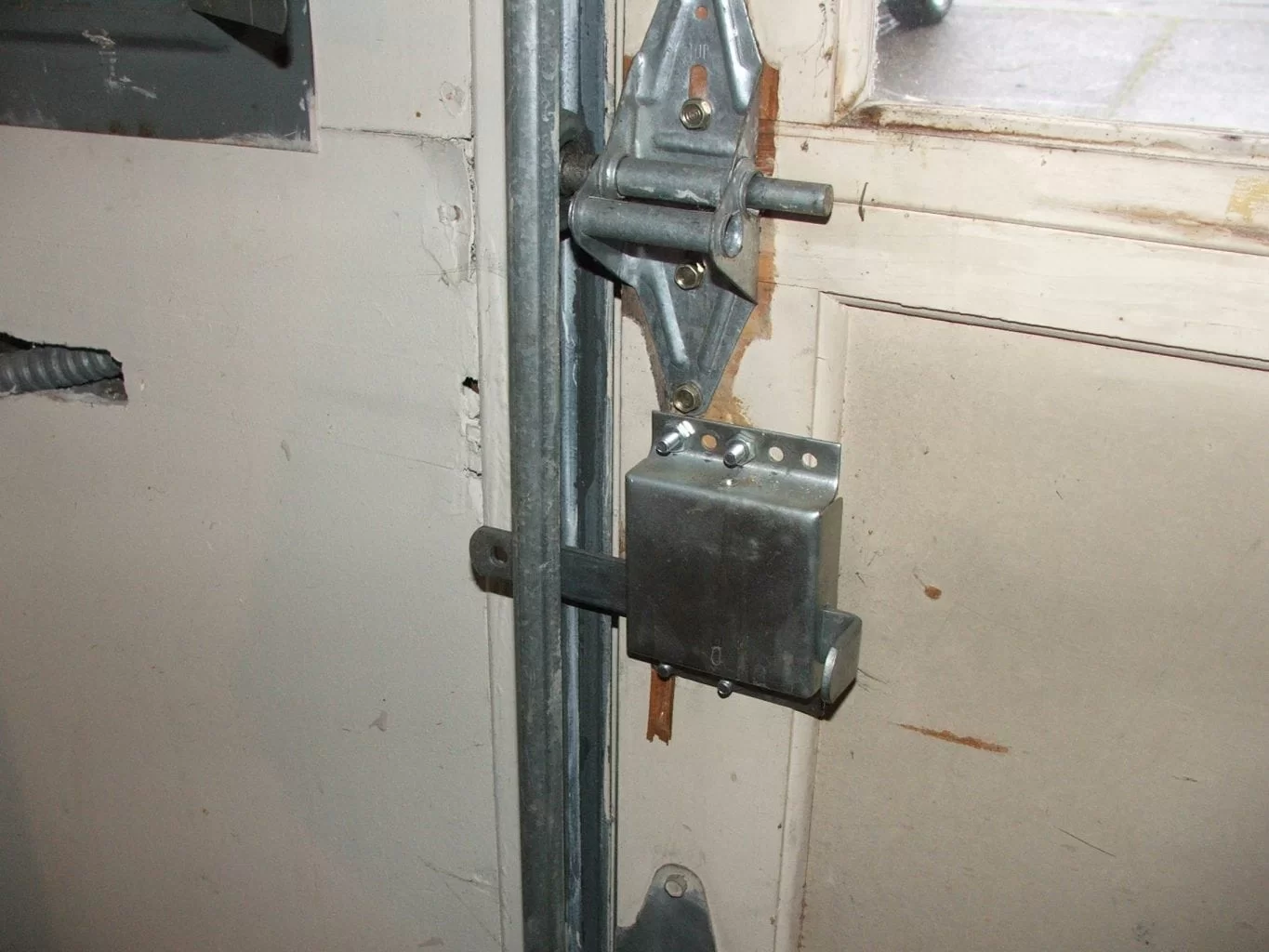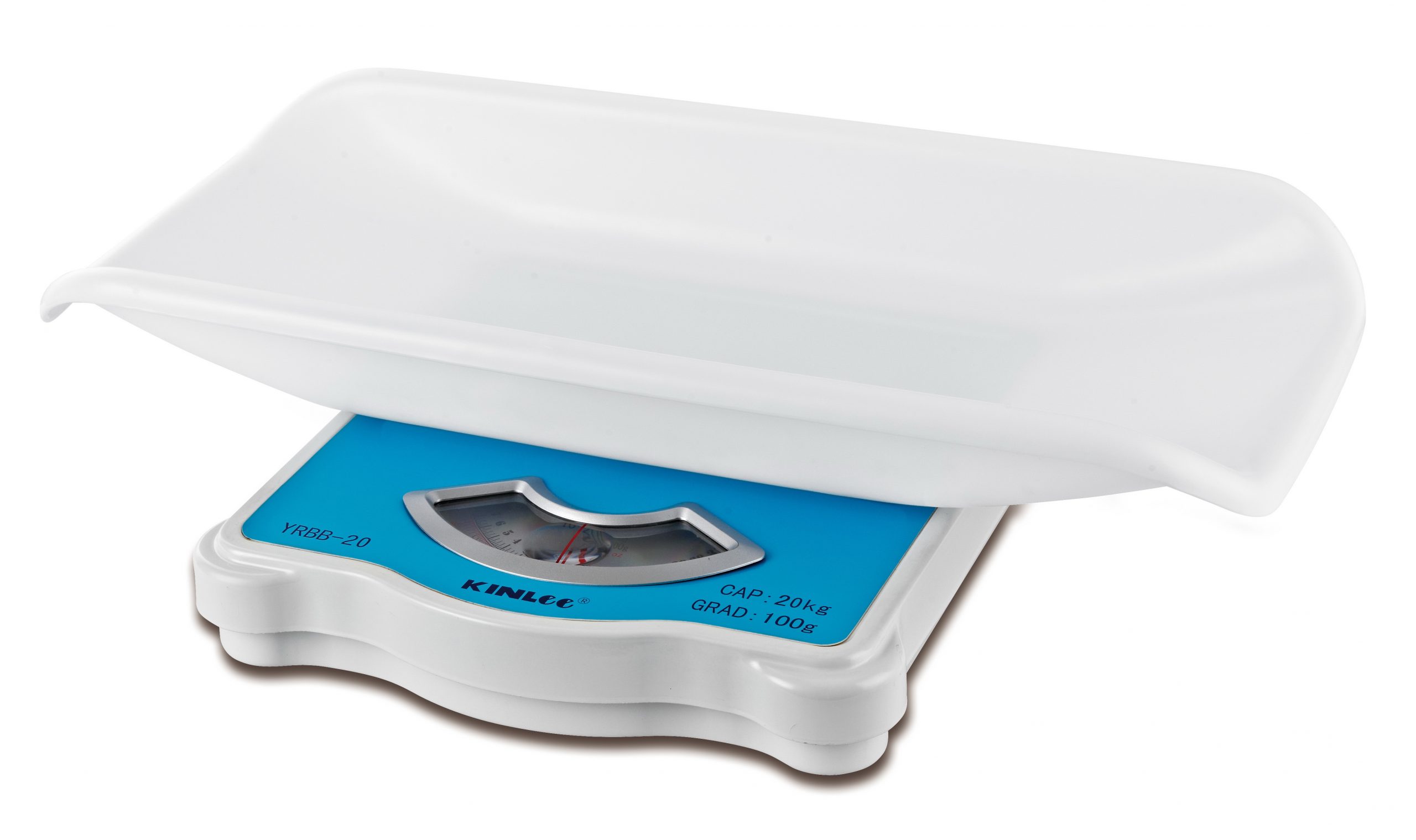

Articles
How To Store Manuals
Modified: March 19, 2024
Learn how to store your articles and manuals properly to keep them organized and easily accessible. Find helpful tips and tricks to maintain the longevity of your valuable resources.
(Many of the links in this article redirect to a specific reviewed product. Your purchase of these products through affiliate links helps to generate commission for Storables.com, at no extra cost. Learn more)
Introduction
When it comes to keeping track of important documents, one often overlooked category is manuals. From user manuals for appliances and electronics to instruction manuals for tools and equipment, these informative guides are essential for troubleshooting issues, understanding product features, and ensuring safe operation.
Properly storing manuals is crucial to ensure their longevity and accessibility. Many people underestimate the value of well-maintained manuals until the moment they desperately need one but can’t find it. Whether you’re a homeowner, a DIY enthusiast, or a business owner, having a system in place for storing your manuals will save you time, frustration, and money in the long run.
In this article, we will explore the importance of proper manual storage and provide practical tips for organizing, handling, and maintaining your manuals. By following these guidelines, you can create a well-organized manual storage system that allows for easy access and ensures your manuals remain in good condition.
Key Takeaways:
- Proper manual storage is crucial for easy access, protection, and cost-saving. Consider factors like storage space, environmental conditions, and digitization to create an efficient and organized manual storage system.
- Organizing manuals by category, proper handling, and digitization are key for easy access and longevity. Labeling, indexing, and regular maintenance ensure efficient retrieval and preservation of valuable information.
Read more: How To Organize Manuals
Importance of Proper Manual Storage
Proper manual storage is key to maintaining an organized and efficient system for accessing and utilizing your manuals. Here are a few reasons why it’s important to prioritize the proper storage of your manuals:
- Accessibility: When you have a designated storage system for your manuals, you can easily locate them when needed. This saves you time searching for misplaced manuals and allows you to quickly reference the information you require.
- Protection: Manuals often contain valuable information that you may need at a later date. By properly storing them, you can protect them from damage or loss, ensuring that the information remains intact and accessible for as long as you need it.
- Efficiency: With a well-organized system in place, you can streamline your workflow and increase efficiency. Instead of wasting time hunting for manuals, you can focus on the task at hand and get things done more quickly and effectively.
- Durability: Manuals can be subject to wear and tear if not properly stored. By implementing a storage system that protects them from elements such as moisture, dust, and sunlight, you can prolong their lifespan and ensure their usability for years to come.
- Cost-saving: When you have access to your manuals, you can troubleshoot and resolve minor issues on your own, without the need to call for professional help. This can save you money on service calls or unnecessary replacement of products.
By recognizing the importance of proper manual storage, you can create a system that preserves the integrity of your manuals and enhances your overall productivity and efficiency.
Factors to Consider When Storing Manuals
When setting up your manual storage system, there are several factors to consider that will ensure the effectiveness and longevity of your manuals. Here are some key factors to keep in mind:
- Storage Space: Determine the storage space available to you. Consider the size and number of manuals you possess and choose a storage solution that fits your needs. Whether it’s a dedicated shelf, a filing cabinet, or digital storage, make sure it can accommodate your manuals comfortably.
- Environmental Conditions: Protect your manuals from environmental factors such as moisture, temperature fluctuations, and direct sunlight. Choose a storage space that is dry, well-ventilated, and away from direct sunlight to prevent deterioration and discoloration of the manuals.
- Physical Protection: To safeguard your manuals from physical damage, use protective covers or sleeves, especially for manuals that are frequently referred to or carried around. This will minimize the risk of tearing, staining, or wrinkling the pages.
- Security: Consider the security of your manual storage location, especially if you have sensitive or confidential information contained within your manuals. Ensure that the storage area is locked and restricted from unauthorized access.
- Accessibility: Create a system that allows for easy access to your manuals when needed. Organize them in a logical manner, either alphabetically or by category, and label them clearly. This will help you locate the manual you require with minimal effort.
- Backup and Digital Storage: Consider digitizing your manuals as a backup in case of loss or damage. Scan your manuals and store them in a secure digital format, such as PDF files, on your computer or cloud storage. This ensures that even if the physical manual is lost, you still have access to the information.
- Maintenance: Regularly inspect your stored manuals for any signs of damage or deterioration. Replace worn-out covers or sleeves, clean off any dust or dirt, and ensure the pages are in good condition. Implement a maintenance schedule to keep your manuals in optimal shape.
By considering these factors when storing your manuals, you can create a storage system that protects your manuals, facilitates easy access, and ensures their longevity.
Choosing the Right Storage Space
Choosing the right storage space for your manuals is crucial to ensure their safety, accessibility, and longevity. Here are some factors to consider when selecting a storage space:
- Space Availability: Assess the available space in your home or office. Determine whether you have enough room for a dedicated shelf, filing cabinet, or storage box to accommodate your manuals. Consider vertical storage options to maximize space utilization.
- Climate Control: Choose a storage area that is climate-controlled, especially if you live in areas with high humidity or extreme temperature changes. Excessive moisture or temperature fluctuations can damage the pages of your manual, leading to illegible text or mold growth.
- Light Exposure: Protect your manuals from direct sunlight, as prolonged exposure can fade the ink and deteriorate the paper over time. Store your manuals in a shaded area or use UV protective sleeves if the storage space is exposed to natural light.
- Security: Consider the security of the storage space. If your manuals contain confidential or valuable information, ensure that the storage area is locked and only accessible by authorized individuals.
- Dust and Dirt Prevention: Keep your manuals away from areas prone to dust and dirt, such as basements or garages. These particles can accumulate on the pages and degrade the quality of the manual. Choose a clean and well-maintained storage location.
- Accessibility: Prioritize easy access to your manuals. If you frequently refer to them, place them in a location that is convenient for retrieval. Consider using open shelving or clear storage containers to easily identify and retrieve the desired manual.
- Separate Categories: If you have manuals from different categories, consider storing them separately. This will help you locate the specific manual you need without sorting through a large collection. Use labels or dividers to clearly categorize and organize your manuals.
- Consider Digital Storage: In addition to physical storage, consider digitizing your manuals for easy access. Scan your manuals and save them as digital files on your computer or cloud storage. This will provide an additional backup and allow you to access the information from anywhere.
By carefully selecting the right storage space for your manuals, you can ensure their protection, accessibility, and longevity, making it easier for you to find the information you need when you need it.
Organizing Manuals by Category
Organizing your manuals by category is an effective way to streamline your manual storage system and easily locate the information you need. Here are some tips for organizing your manuals:
- Group Similar Manuals Together: Start by grouping similar manuals together based on their purpose or content. For example, create categories such as home appliances, electronics, tools, or automotive. This will ensure that all manuals related to a specific category are stored together.
- Use Clear Dividers or Folders: Use clear dividers or folders to separate each category. This makes it easy to visually identify and access the desired manual without having to go through all the manuals in your collection.
- Label Each Category: Label each category with clear and descriptive labels. This will make it even easier to locate the specific manual you need. Use labels that can be easily read from a distance, such as large print or color-coding.
- Sort Manuals Alphabetically: Within each category, consider sorting the manuals alphabetically by product or brand name. This will further enhance the organization and make it quicker to find the manual you’re looking for.
- Create an Index: For larger collections of manuals, create an index or catalog that lists all the manuals you have. Include the category, product name, and page number in the index. This can be a digital document or a physical index stored near your manual collection. It will serve as a quick reference guide for locating specific manuals.
- Review and Weed Out: Periodically review your manual collection and remove any outdated or irrelevant manuals. This will prevent your storage space from becoming cluttered and will ensure that you only keep the manuals that are still relevant to your needs.
- Consider Subcategories: If you have a large collection within a particular category, consider creating subcategories to further organize your manuals. For example, within the electronics category, you could have subcategories such as televisions, computers, or cameras.
- Digitize for Easy Access: As mentioned earlier, consider digitizing your manuals as a backup and for easy access. Store the digital versions in separate folders on your computer or in a cloud storage service. This will allow you to search for keywords and quickly find the manual you need.
By organizing your manuals by category, you create a systematic and efficient storage system that ensures quick and easy access to the information you require. This saves you valuable time and minimizes frustration when you need to consult a manual.
Store manuals in a designated folder or binder, organized by category or alphabetical order. Keep them in a dry, easily accessible location to quickly find when needed.
Read more: How To Drain Dishwasher Manually
Proper Handling and Maintenance of Manuals
Proper handling and maintenance of manuals are essential to ensure their longevity and readability. By following these guidelines, you can preserve the quality of your manuals and ensure that the information they contain remains accessible. Here are some tips:
- Handle with Clean Hands: Before touching a manual, make sure your hands are clean and free from dirt, oil, or any substances that could stain or damage the pages. This helps prevent smudging or soiling the manual.
- Avoid Folding or Creasing Pages: Refrain from folding or creasing the pages of your manuals, as this can weaken the paper and make it prone to tearing. Gently turn the pages from the corners to avoid any unnecessary damage.
- Use Bookmarks or Page Holders: When using a manual, use bookmarks, sticky notes, or page holders to mark important sections. This allows you to quickly find the desired information without bending or tearing the pages.
- Store Manuals in Protective Covers: Consider using protective covers or sleeves to shield your manuals from dust, moisture, and light. These covers help prevent damage to the pages and keep the manual in good condition over time.
- Keep Manuals Away from Liquids: Avoid exposing manuals to liquids or moisture, as this can cause water damage and make the pages stick together or become illegible. Store manuals in a dry location away from potential spills or leaks.
- Store Manuals Upright: When storing manuals on a shelf or in a storage box, keep them upright to prevent the pages from warping or becoming misaligned. Storing them flat can put unnecessary pressure on the binding, leading to damage.
- Avoid Excessive Heat or Cold: Extreme temperatures can damage the pages of your manuals and cause them to become brittle or discolored. Keep manuals away from direct heat sources or areas prone to temperature fluctuations.
- Regularly Dust Off: Dust your manuals regularly to prevent dust buildup, which can degrade the quality of the pages and make them less readable. Use a soft, lint-free cloth or a gentle brush to remove dust without scratching the surface.
- Handle Delicate Manuals with Care: If you have manuals with delicate pages or fine print, exercise extra caution when handling them. Avoid bending or applying excessive force, as this can cause tears or damage to the delicate pages.
- Keep Manuals in a Safe Location: Store your manuals in a safe location to protect them from theft or accidental damage. Consider using a lockable cabinet or keeping them in a secure area that limits access to authorized individuals.
By following these tips for proper handling and maintenance, you can ensure that your manuals remain in good condition and are readily available whenever you need to refer to them.
Digitizing Manuals for Easy Access
Digitizing your manuals is an excellent way to ensure easy access to information and create a backup in case of loss or damage. By converting your manuals into digital formats, you can eliminate the hassle of searching through physical copies and have instant access to the information you need. Here are some tips for digitizing your manuals:
- Scan the Manuals: Utilize a scanner to convert your paper manuals into digital files. Place each page on the scanner bed and scan them one by one. Make sure the scanning resolution is high enough to capture clear and readable text.
- Save as PDF Files: Save the scanned manuals as PDF files. PDF is a widely accepted format that preserves the layout and formatting of the original document, ensuring that it is easily readable across different devices and platforms.
- Organize in Folders: Create a folder structure on your computer or cloud storage system to organize your digital manuals. Consider using categories, subcategories, or product names to keep the files well-organized and easily accessible.
- Add Metadata: Include relevant metadata, such as product names, models, or categories, as part of the file properties or in the file names. This will make it easier to search for and locate specific manuals when needed.
- Implement Text Recognition: If your scanning software supports it, enable text recognition (OCR) when scanning the manuals. This will convert the scanned images into searchable and selectable text, allowing you to search for keywords within the manual content.
- Backup the Digital Files: Ensure that you have multiple copies of the digital files in different locations for added security. This includes storing backups on external hard drives, cloud storage services, or utilizing online backup solutions.
- Access from Any Device: Take advantage of cloud storage services to access your digital manuals from any device with an internet connection. This allows you to quickly search, view, and reference the manuals on your computer, smartphone, or tablet.
- Consider Mobile Apps: Explore mobile apps designed specifically for storing and managing digital manuals. These apps often provide features like searchable databases, bookmarking, and annotation capabilities to enhance your experience with digital manuals on mobile devices.
- Regularly Update and Maintain: As you acquire new manuals or update existing ones, make it a habit to scan and digitize them promptly. Regularly review your digital collection to ensure it remains up-to-date and organized, deleting any outdated or irrelevant manuals.
- Secure the Digital Files: Just like physical manuals, it’s important to secure your digital files. Implement proper security measures such as password protection and encryption to safeguard your digital manuals from unauthorized access.
By digitizing your manuals, you can create a convenient and easily accessible library of information. Whether you prefer to access manuals on your computer, tablet, or smartphone, converting them into digital formats allows for quick searches, easy reference, and eliminates the hassle of managing physical copies.
Labeling and Indexing Manuals
Labeling and indexing your manuals is essential for maintaining an organized and efficient manual storage system. Proper labeling and indexing enable quick and easy retrieval of the manual you need, saving you valuable time and effort. Here are some tips for effectively labeling and indexing your manuals:
- Use Clear and Descriptive Labels: When labeling your manuals, use clear and descriptive labels that indicate the content or purpose of the manual. Include product names, models, or categories on the labels to provide clear identification.
- Label the Spine: Place labels on the spine of each manual. This makes it easy to identify manuals when they are stored vertically on a shelf. Choose labels that are durable, legible, and easily visible.
- Color-Code: Consider using color-coded labels or stickers to color-coordinate your manuals based on categories or importance. This visual cue will help you quickly identify the desired manual within your collection.
- Create a Master Index: Develop a master index or catalog that lists all the manuals you have. Include details such as the category, product name, and location of each manual within your storage system. This index can be in a digital format or a physical document stored near your manual collection.
- Numerical or Alphabetical Order: Assign numerical or alphabetical labels to your manuals to provide an organized order. You can use digits (e.g., 1, 2, 3) or alphabetical letters (e.g., A, B, C) to group manuals within each category or subcategory of your storage system.
- Include Keywords: If your manual collection is extensive, consider adding keywords or tags to the manual labels or index. This allows for easier searching and retrieval based on specific topics or keywords related to the manual’s content.
- Update Labels and Index Regularly: Keep your labels and index up to date by adding new manuals and removing any outdated or irrelevant ones. This ensures that your labeling system accurately reflects the content of your manual collection.
- Label Storage Containers: If you use storage containers, boxes, or folders for manual organization, label them accordingly. Clearly mark the category or subcategory of manuals contained within each container to streamline the retrieval process.
- Use Index Tabs: For larger manuals or manuals with multiple sections, utilize index tabs to divide them into easily navigable sections. This allows for quick referencing and flipping to specific sections within the manual.
- Create Digital Indexes: If you have digitized your manuals, create digital indexes or catalogs using software or document management systems. Use keywords and metadata within the digital files to facilitate searching and accessing specific manuals.
By labeling and indexing your manuals effectively, you can establish a well-organized system that ensures quick and effortless retrieval of the manual you need. Whether you are searching for a specific product manual or browsing through your collection, proper labeling and indexing will optimize the efficiency of your manual storage system.
Implementing a Regular Maintenance Schedule
Maintaining your manual collection is just as important as organizing and storing them properly. Implementing a regular maintenance schedule ensures that your manuals remain in good condition and continue to serve their purpose effectively. Here are some tips for implementing a regular maintenance schedule for your manuals:
- Inspect Manuals Regularly: Set a schedule to inspect your manuals regularly. This allows you to identify any signs of damage, such as torn pages, loose bindings, or water stains. Catching these issues early on can prevent further deterioration.
- Replace Damaged Covers or Sleeves: If you notice that the protective covers or sleeves of your manuals are torn, stained, or worn out, replace them promptly. These covers offer an additional layer of protection and prevent further damage to the manual pages.
- Clean Dust and Dirt: Dust and dirt can accumulate on the surfaces of your manuals over time. Use a soft, lint-free cloth or a gentle brush to gently wipe the covers and pages of your manuals. Regular dusting prevents buildup and keeps your manuals clean.
- Address Moisture and Humidity: High moisture levels can cause mold growth and damage your manuals. Monitor the humidity levels in your storage area and take steps to reduce excessive moisture if necessary. Consider using dehumidifiers or moisture-absorbing products in your storage space.
- Repair or Reinforce Loose Pages: If you come across loose pages in your manuals, repair them promptly to prevent further tearing or loss. Use acid-free adhesive or clear tape to reinforce weakened bindings and keep the pages securely in place.
- Remove Outdated Manuals: As technology evolves and products become obsolete, some manuals may become outdated. Regularly review your collection and remove manuals that are no longer relevant or useful. This keeps your storage space organized and frees up room for new manuals.
- Create a Backup: If you have digitized your manuals, ensure that you have a backup plan in place to protect your digital files. Regularly back up your digital manuals to external hard drives, cloud storage, or other secure locations to prevent data loss.
- Update Your Index or Catalog: If you maintain an index or catalog for easy reference, make sure to update it regularly. Remove any manuals that have been removed from your collection and add new ones to keep the index accurate and up to date.
- Handle Manuals with Care: Whenever you retrieve or handle a manual, do so with clean hands and gentle movements. Avoid bending or applying excessive force, as this can cause damage to the pages or bindings.
- Store Manuals in Proper Conditions: Ensure that your storage area continues to meet the requirements for proper manual storage. Check for any changes in temperature, humidity, or exposure to sunlight. Take necessary steps to maintain the appropriate storage conditions.
By implementing a regular maintenance schedule, you can ensure that your manuals remain in good condition, are easily accessible, and continue to provide the information you need when you need it. Prioritizing the maintenance of your manual collection extends their lifespan and protects your investment in valuable resources.
Read more: How To Use A Manual Juicer
Conclusion
Properly storing and maintaining your manuals is essential for easy access, protection, and longevity. By following the guidelines outlined in this article, you can create an organized and efficient manual storage system that saves you time, minimizes frustration, and ensures the longevity of your manuals. Here’s a recap of the key points discussed:
First and foremost, recognizing the importance of proper manual storage is crucial. It allows for quick and easy access to information, protects manuals from damage, increases efficiency, and saves costs by enabling you to troubleshoot and resolve issues on your own.
Consider various factors when choosing a storage space, such as available space, climate control, security, and accessibility. Create a storage area that is dry, well-ventilated, and away from direct sunlight to preserve the quality and readability of your manuals.
Organizing your manuals by category improves efficiency. Group similar manuals together, use clear dividers or folders, and label each category. Sorting manuals alphabetically and creating an index or catalog makes it easier to find specific manuals within your collection.
Proper handling and maintenance of manuals ensure their longevity. Handle manuals with clean hands, avoid folding or creasing pages, and store them in protective covers or sleeves. Regularly inspect, dust off, and address any signs of damage or deterioration.
Digitizing your manuals provides easy access and serves as a backup. Scan manuals, save them as PDF files, and organize them in folders. Implement text recognition, regularly update, and secure the digital files for added convenience and peace of mind.
Labeling and indexing your manuals enhance organization and retrieval. Use clear and descriptive labels, color-coding, and numerical or alphabetical order. Create a master index and utilize index tabs to further streamline the process.
Implementing a regular maintenance schedule ensures the ongoing quality and accessibility of your manuals. Inspect, clean, repair, and update your collection regularly. Remove outdated manuals and create backups of digital files.
In conclusion, by prioritizing proper storage, organization, handling, maintenance, and digitization of your manuals, you can create a system that saves you time, protects valuable information, and ensures ease of access. Take the time to establish a well-organized manual storage system, and you will reap the benefits in the long run.
Frequently Asked Questions about How To Store Manuals
Was this page helpful?
At Storables.com, we guarantee accurate and reliable information. Our content, validated by Expert Board Contributors, is crafted following stringent Editorial Policies. We're committed to providing you with well-researched, expert-backed insights for all your informational needs.














0 thoughts on “How To Store Manuals”